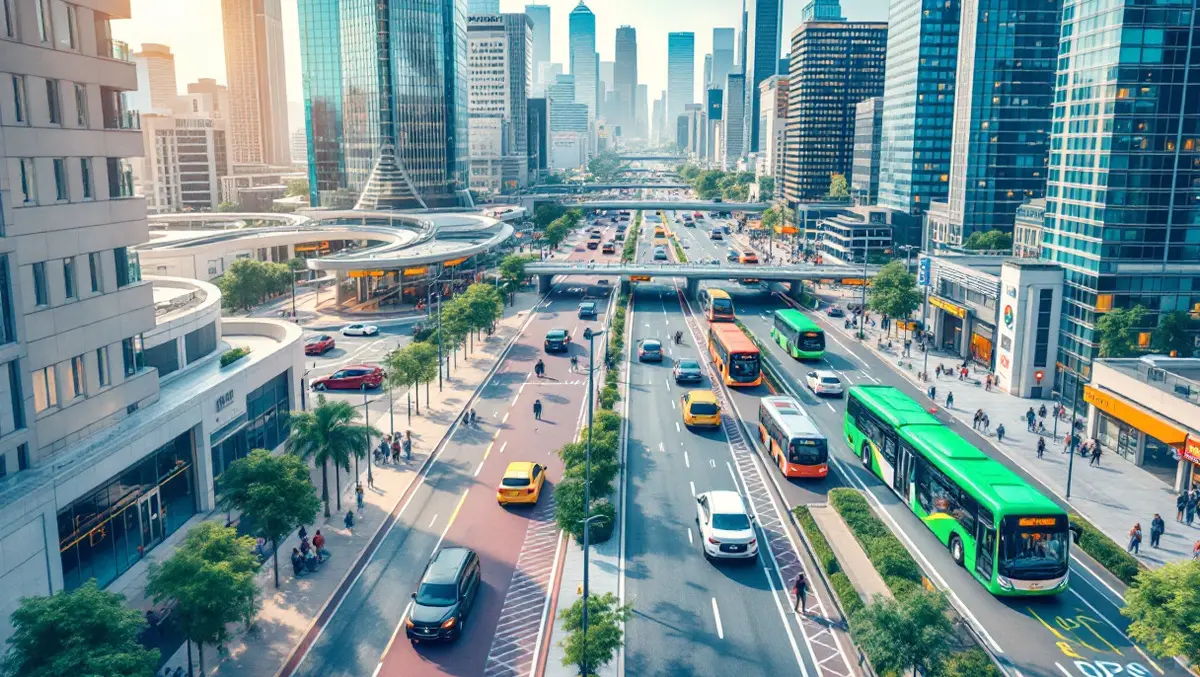
Intelligent transport market to reach USD $124.8bn by 2035
The global intelligent transportation system market is projected to surpass USD $124.8 billion by 2035, according to a new report by Transparency Market Research.
Transparency Market Research's report indicates that the intelligent transportation system (ITS) sector was valued at USD $41.7 billion in 2024 and is forecast to expand at a compound annual growth rate of 10.22% between 2025 and 2035. The analysis finds that increased urbanisation, government investment, sustainability targets, and rapid technology integration are the principal forces driving the market.
ITS refers to the deployment of technologies such as artificial intelligence, Internet of Things (IoT), machine learning, big data analytics, and cloud computing in transport networks to improve efficiency, safety, and sustainability. Applications range from traffic management and automated toll collection to vehicle-to-infrastructure (V2I) communications and predictive maintenance.
The report highlights that nearly 70% of the world's population is expected to reside in urban areas by 2050, resulting in heightened demand for smarter transport solutions. The authors note that cities are adopting ITS to alleviate congestion, minimise signal wait times, and provide competitive alternatives to private vehicles through more responsive public transit systems.
Government initiatives are a significant market catalyst. According to the report, programmes such as the U.S. Department of Transportation's Connected Vehicle Pilot, India's Smart Cities Mission, and Europe's Horizon 2020 are injecting substantial funding into intelligent transportation research and rollouts.
Sustainability objectives form a further major growth driver as countries pursue strategies to reduce emissions. The report finds that ITS contributes to lower carbon footprints by optimising traffic flow, decreasing vehicle idling, and encouraging eco-friendly transport modes.
Advancements in 5G, cloud computing, edge devices, and artificial intelligence are making real-time data-driven transport systems increasingly practical. The study notes that, "The convergence of 5G, cloud computing, edge devices, and AI is enabling real-time data collection and analysis like never before. This has opened doors to highly responsive traffic systems, autonomous vehicle integration, and even predictive analytics that can foresee traffic patterns days in advance."
The intelligent transportation market comprises multiple segments, including Advanced Traffic Management Systems (ATMS), Advanced Public Transportation Systems (APTS), Commercial Vehicle Operations (CVO), automated toll collection, and intelligent parking management. Each area is expected to experience substantial growth as adoption spreads among municipalities and companies.
"Advanced Traffic Management Systems (ATMS): These systems help optimise traffic signal control, monitor congestion, and manage incidents. As cities become more congested, ATMS adoption is skyrocketing. Advanced Public Transportation Systems (APTS): Real-time tracking, route optimisation, and mobile ticketing are revolutionising how people use buses, metros, and trains. Commercial Vehicle Operations (CVO): Logistics companies are using ITS to monitor fleets, ensure compliance with regulations, and improve delivery efficiency. Automated Toll Collection: Cashless, contactless tolling is not just convenient; it also helps reduce bottlenecks at highway exits and bridges. Intelligent Parking Management: Smart parking sensors and mobile apps are helping drivers find available spots, saving time and reducing urban congestion."
Regionally, North America and Europe are noted as established leaders in ITS deployment due to significant government spending and well-developed infrastructure. The report identifies the US, Canada, Germany, and the UK among the most invested countries in smart highways and connected vehicle initiatives.
Growth is quickly accelerating in Asia-Pacific, with China, Japan, South Korea, and India embracing ITS technologies often using cloud-based and mobile-first deployments. The report also cites Latin America, the Middle East, and Africa as promising markets, mentioning pilot projects and smart city initiatives in Brazil, UAE, and South Africa.
Challenges for the global market remain, particularly around IT security. As transport systems become connected, they are vulnerable to cyberattacks. The report asserts, "Cybersecurity remains a significant concern. As transportation systems become more connected, they also become more vulnerable to cyberattacks. Ensuring data privacy and secure communication is paramount."
Another issue is interoperability due to the varied technologies and standards in use, making cohesive system integration complex. "With different vendors, technologies, and standards in play, creating a seamless, integrated ITS ecosystem is no easy task. Governments and industry leaders must work together to develop open standards and promote cross-platform collaboration." High upfront costs and retrofitting older infrastructure are further barriers, particularly for smaller municipalities.
The report anticipates that autonomous vehicles will rely on intelligent transport infrastructure for real-time operation and that V2X (Vehicle-to-Everything) communications will become increasingly prominent as AVs move into mainstream use. "AI-driven predictive analytics will also become a standard feature in urban mobility planning, allowing cities to anticipate and mitigate congestion before it even happens."
"Moreover, multi-modal transportation platforms will rise—where users can plan, book, and pay for a journey involving bikes, buses, trains, and ride-sharing from a single app."
The market findings indicate a projected increase from USD $41.7 billion in 2024 to USD $124.8 billion by 2035. The report concludes, "As ITS continues to bridge the gap between mobility and technology, the ultimate goal remains the same: to create smarter, safer, and more sustainable transportation systems for everyone. And with the tools and momentum already in place, the journey ahead looks nothing short of revolutionary."


